2017 Guo Pei Gown from the “Legend” Collection
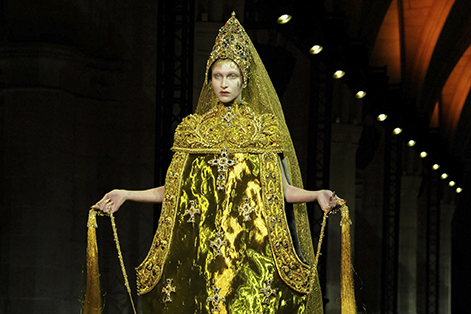
Religion: Christianity
Time Period: 2010s
Type Of Garment: Dress
Tags: Abbey of St. Gall, China, Guo Pei, High Fashion, Thurible
The Creator and Context:
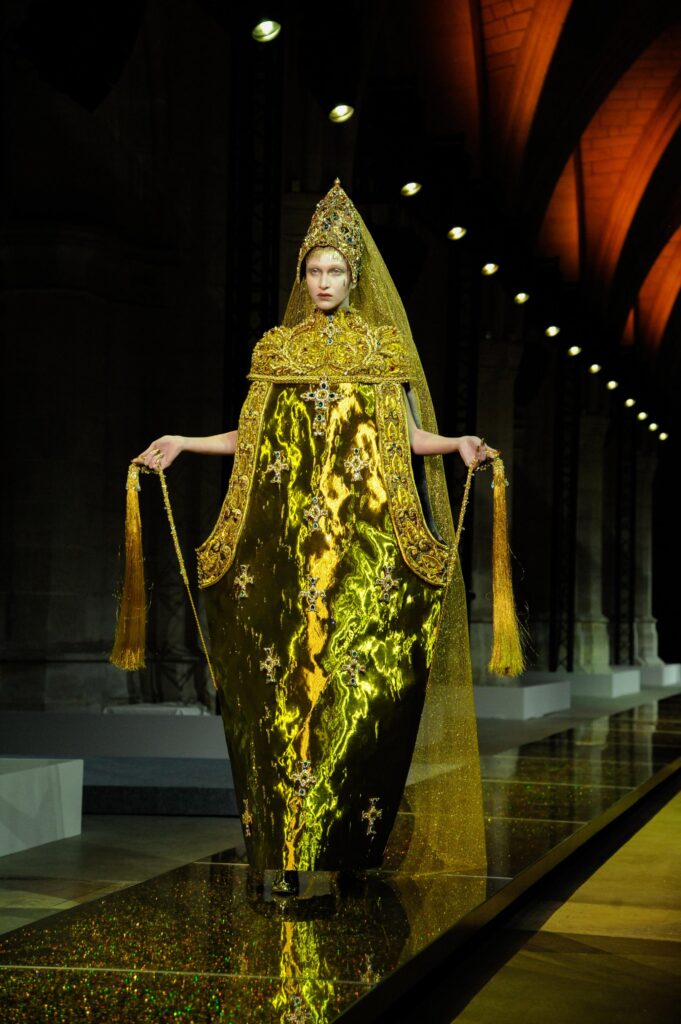
The work of Guo Pei, an award-winning fashion designer and artist, mesmerizes audiences as it goes down the runway and they see it displayed in museums as high art. Born in Beijing China in 1967, Guo Pei learned to sew as a child and attended the Beijing School of Industrial Fashion Design (“Bio”). After working in the industry for a decade, she created her own label, Rose Studio, in 1997. In 2015, singer and fashion icon Rihanna wore a Guo Pei design to the Met Gala. One of the few celebrities to wear a garment by a Chinese designer, the bold yellow fur trimmed cape with an extravagant train stole the show, highlighted the work of Guo Pei, and proclaimed the exhibit theme: “China: Through the Looking Glass.” The next year, Guo Pei was invited to become a member of the Chambre Syndicale de la Haute Couture and debuted her work at Haute Couture Paris Fashion week (“Bio”). Her work revolves around combining old with new, and traditional with contemporary. She explains: “I believe that design can never be too far away from the past; designers should learn about the past to inform their own designs and become a part of history themselves” (Kolesnikov-Jessop 2017). Therefore, it comes as no surprise that the inspiration for her 2016 “Legend” Collection was the Abbey of St. Gall.
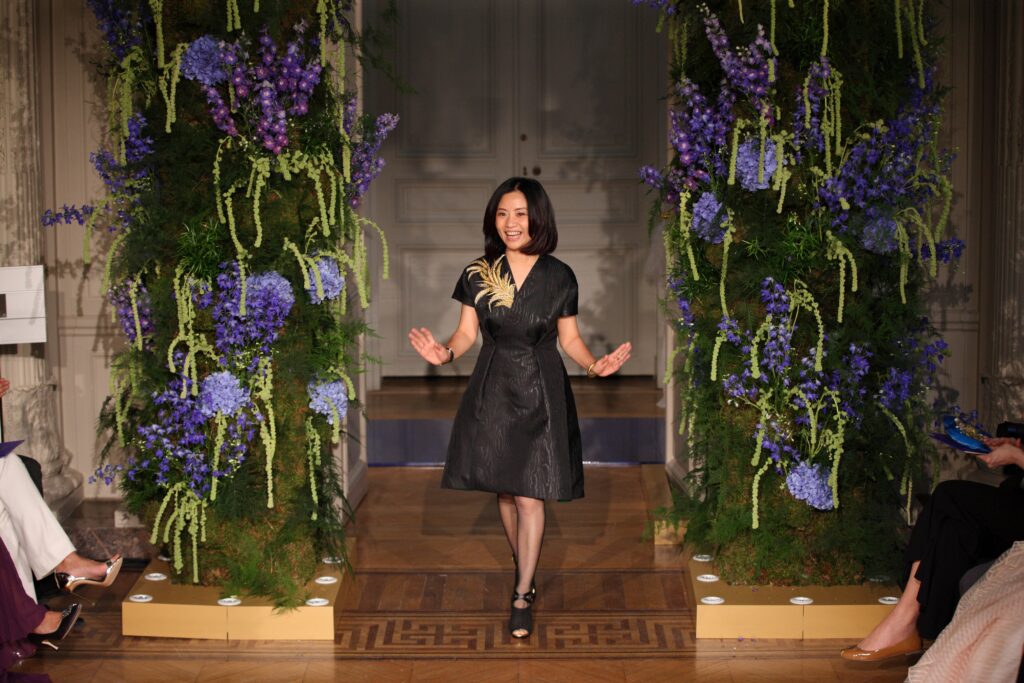
In speaking about the collection, Guo Pei shared her vision. She explained: “The origins of mankind, creation myths and the mysteries of eternal life fascinate me. A part of my soul will always hold on to the most beautiful fantasies inspired by legends” (BENUDE 2019). She then embarked upon a challenging endeavor– transforming elements of this ancient abbey into high fashion pieces that audiences would find interesting and engaging. Built in the eighth century, the Abbey of St. Gall is a Roman Catholic religious complex in St. Gallen, Switzerland that served as a monastery. The complex represents 1200 years of history and architecture, and is renowned for its beautifully decorated Baroque library (“Abbey of St Gall”). Guo Pei spent two years studying the abbey and working with 500 artisans to design and craft her pieces, inspired by its Baroque architecture, textiles, and murals (Battista 2017). Although Guo Pei may not have taken on this project to directly emphasize religion, her detailed work shows a respect for Christianity and its art through her modern play on Baroque style.
The Object:
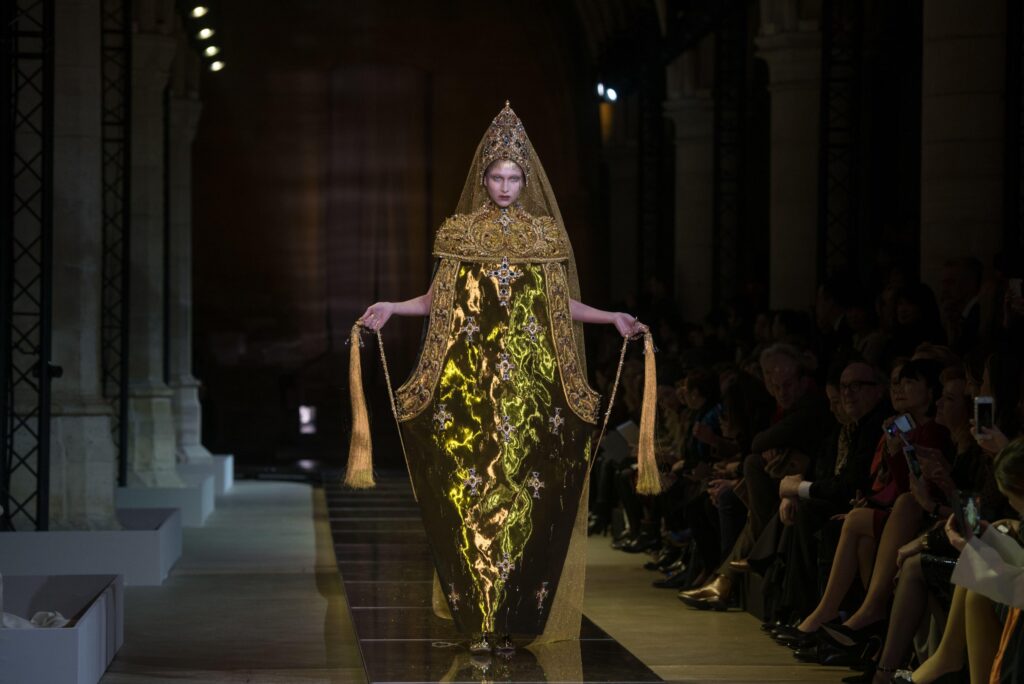
This garment represents an amalgamation of Guo Pei’s collection, as it combines literal elements of Christianity with artistic inspiration drawn from the Abbey of St. Gall. Its unique physical structure speaks for itself, and it is the most eye-catching part of the piece. The striking diamond-like shape of the dress and the way it is worn by the model immediately catches your eye. Unlike most of the “Legend” Collection collection, this garment is not simply inspired by a visual element in the abbey and transformed into a dress or easily wearable garment (The Guardian 2017). Instead, this garment is distinctive in its shape and its wearability (or more accurately in the challenges and distinctiveness of its wearability). As shown in Figure 3, the model grips the side cords, which demonstrates the specific way for this garment to be worn and signals its physical and metaphorical reference in the Christian faith.
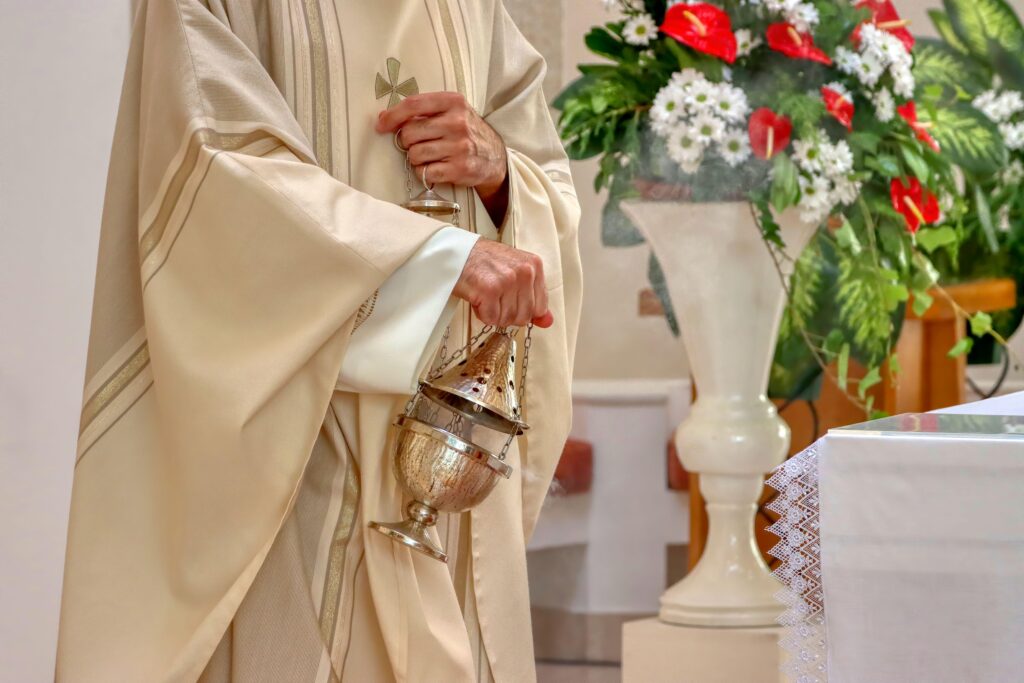
The diamond structure of the gown created through heavy gold framing along with the crown-like pointed headpiece and tassels indicates that this garment represents an oil vigil lamp, known as a thurible, used in Catholic and Orthodox churches to burn incense during mass (see Figure 4). The object and its function have deep Christian significance. The sweet scent of incense symbolizes offering something pleasing to God, meanings derived from passages in the Christian Bible. For example, after describing the details involved in making a proper sacrifice, Leviticus 1:9 states “And the priest shall burn the whole on the altar, as a burnt offering, an offering by fire, a pleasing odor to the Lord.” And 2 Corinthians 2:14-15 reads: “But thanks be to God, who in Christ always leads us in triumph, and through us spreads the fragrance of the knowledge of him everywhere. For we are the aroma of Christ to God among those who are being saved and among those who are perishing.” A pleasing scent or aroma, as seen in this passage, often emphasizes dedication and devotion to God (“The Symbolism of Incense” 2020). In her carefully sculpted and embellished design, Guo Pei respectfully translates this Christian object into the language of fashion.
While this is the most obvious symbolism of the garment, we must also analyze the other imagery in the piece. The most clear symbols that stand out are the golden and jeweled crosses adorning the front of the gown. One large cross appears at the top, with smaller ones all around the bodice of the garment. The background upon which these crosses are inlaid resembles a night sky and could perhaps represent the heavens. It may also be a recreation of a mural or tapestry within the Abbey of St. Gall, but that is unclear. The headdress stands out as another integral part of the garment (see Figure 5). It not only mimics the top of the thurible, but also evokes the important role head coverings have played in Christianity. The wearing of headdresses and headscarves in Christianity typically signals the wearer’s modesty and piety. However, the headdress’s construction out of gold and its adornment with numerous gemstones complicate this interpretation. The juxtaposition between the piety and humble nature of religious devotion and the craftsmanship and exquisite detailing gives the viewer pause.
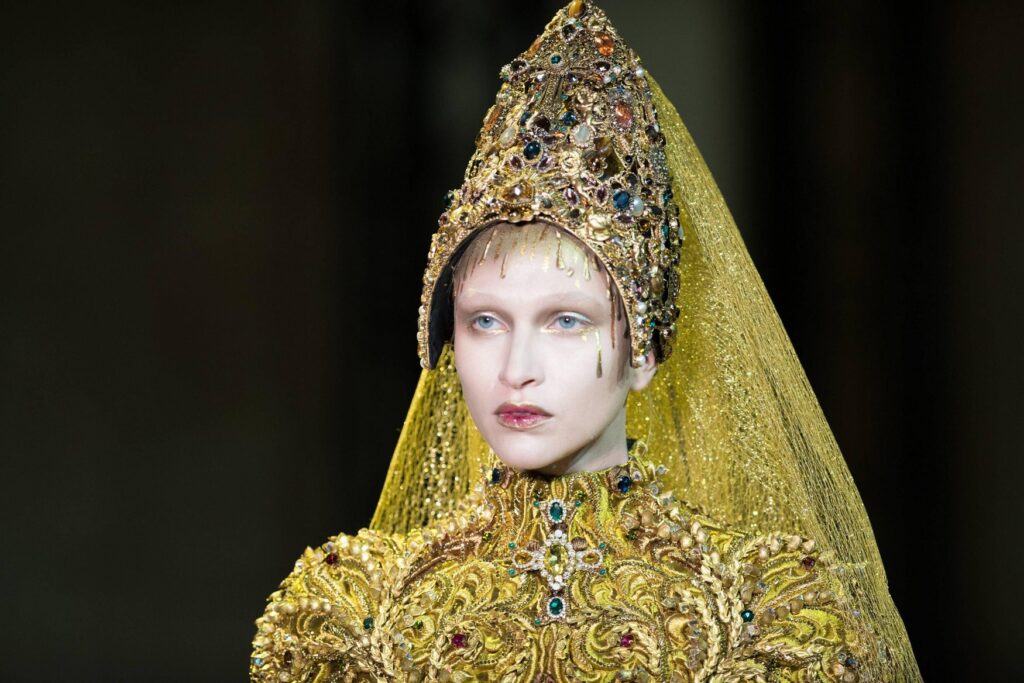
The Reception and Creator (redux):
Tags: Abbey of St. Gall, China, Guo Pei, High Fashion, Thurible
